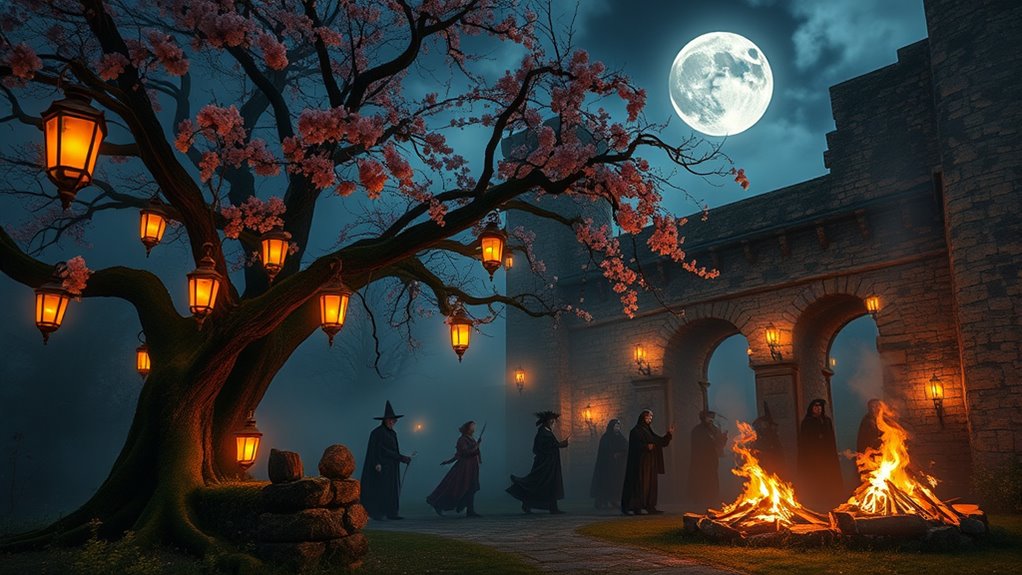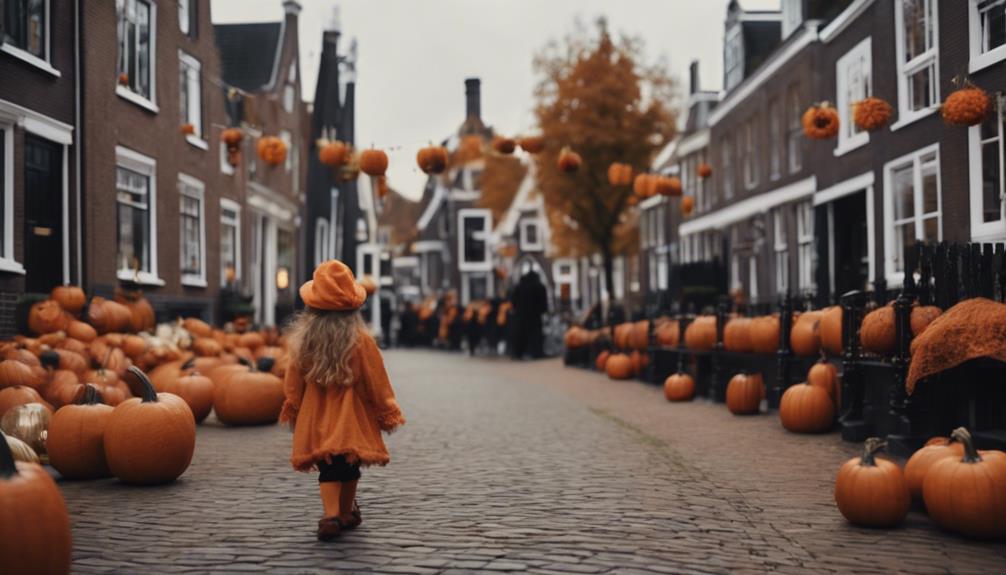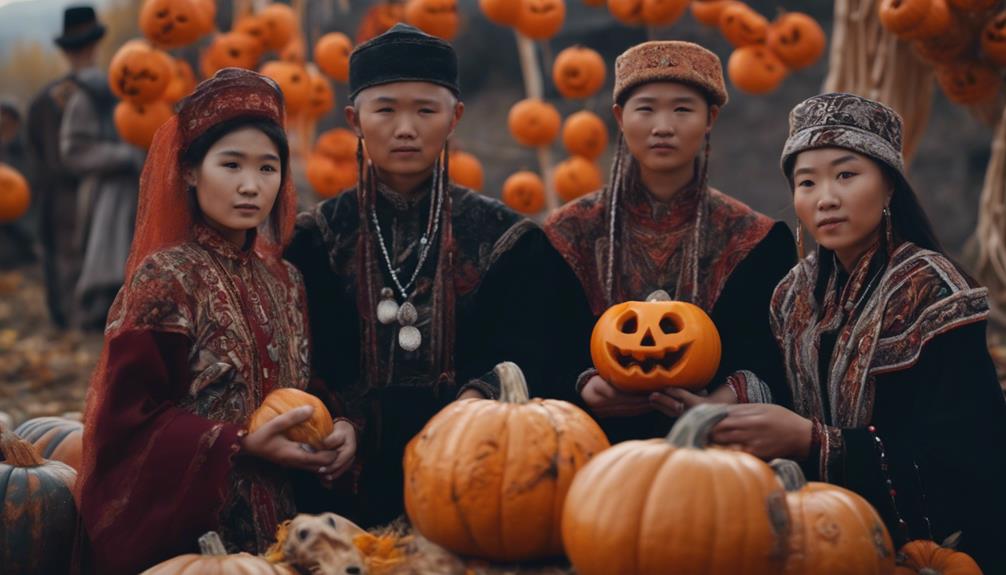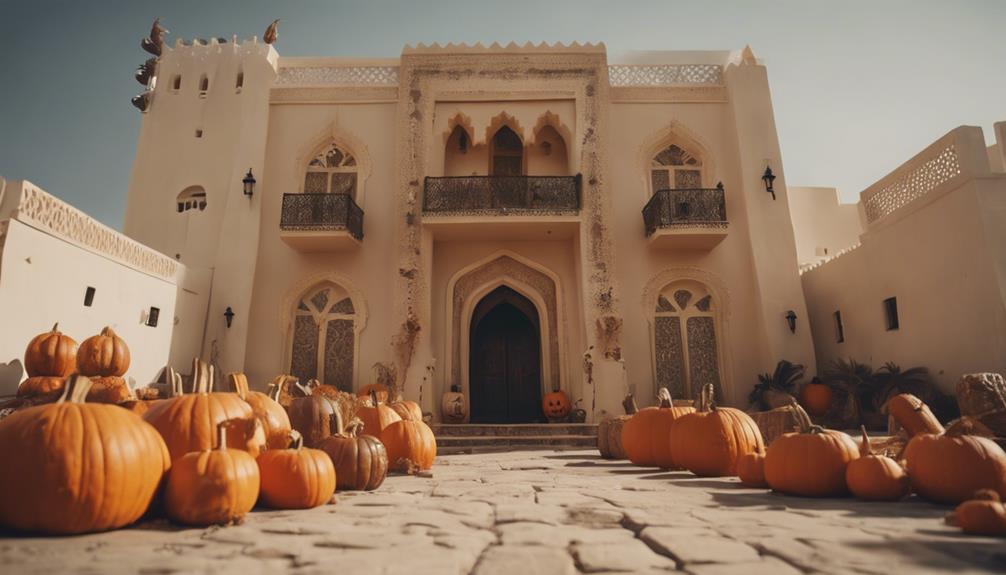Walpurgis Night in Germany is a lively spring celebration similar to Halloween, featuring bonfires, folklore, and festive gatherings. You’ll see communities coming together to light fires that symbolize warding off evil spirits and welcoming the season of renewal. It’s rooted in ancient traditions that honor the arrival of spring, fertility, and natural cycles. If you continue exploring, you’ll discover how these customs have evolved into vibrant festivities full of history and meaning.
Key Takeaways
- Walpurgis Night, celebrated on April 30th in Germany, marks the transition from winter to spring, similar to a spring Halloween.
- The festival features witches’ bonfires symbolizing warding off evil spirits and welcoming fertility and growth.
- People gather to dance, sing, and enjoy lively festivities around the fires, emphasizing communal celebration.
- It has origins rooted in ancient folklore and pagan traditions honoring natural cycles and seasonal renewal.
- Modern celebrations blend historical customs with festive activities, emphasizing hope, renewal, and the arrival of spring.
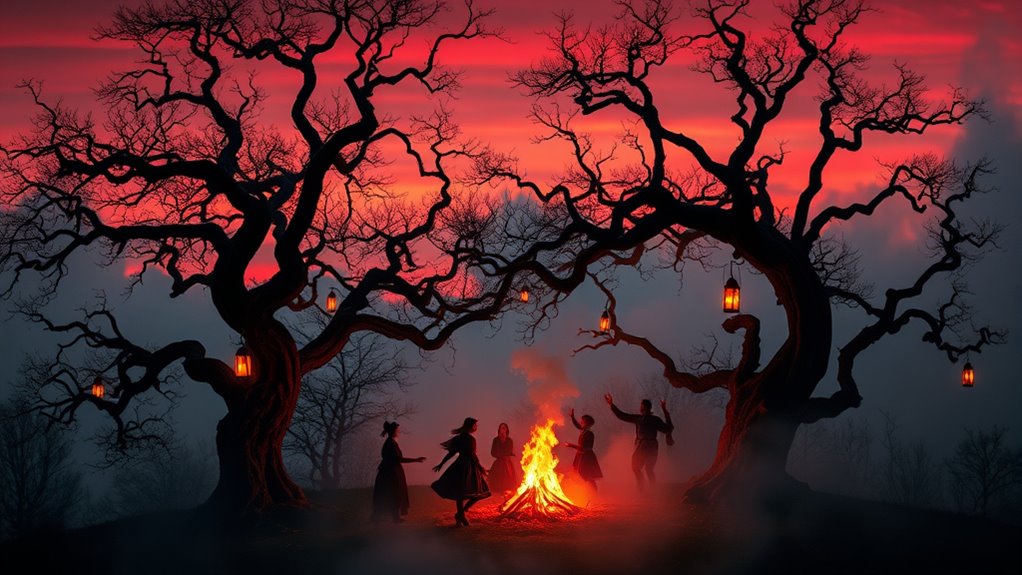
Have you ever wondered why people celebrate Walpurgis Night with bonfires and festivities? It’s a tradition rooted in ancient beliefs, where the night marks the changeover from winter to spring. Central to this celebration are witches’ bonfires, which are more than just sparks flying into the night sky—they’re symbols of warding off evil spirits and welcoming the warmer months. These fires are believed to chase away lingering darkness and invite the energy of spring fertility, a time when nature awakens and life begins anew. As you witness the crackling flames, you’re part of a centuries-old ritual that celebrates renewal and growth.
The idea behind witches’ bonfires ties directly to old folklore that depicts witches gathering on this night, flying across the sky on their brooms and casting spells to influence the coming season. While modern celebrations have become more festive, these fires still carry that historical significance. They serve as a communal act of letting go of winter’s gloom and embracing the promise of spring. The glow of the bonfires lights up the night, drawing people together in shared joy and anticipation. It’s a night to dance, sing, and revel in the lively atmosphere, all while honoring the ancient customs that paid homage to the earth’s rebirth.
You might notice that Walpurgis Night is also closely linked to the theme of spring fertility. The fires symbolize vitality, growth, and the fertility of the land. As farmers and villagers gather around these flames, they’re performing a symbolic act of nurturing the earth’s potential for bountiful harvests. It’s a reminder that life is cyclical—after darkness and stillness, comes abundance and renewal. The fires aren’t just about warding off evil; they’re also about celebrating the natural cycles of life, encouraging prosperity and health for the coming year. This connection to fertility makes Walpurgis Night a vibrant, hopeful occasion that aligns with the agricultural calendar.
Frequently Asked Questions
How Did Walpurgis Night Originate Historically?
You might wonder how Walpurgis Night started. Historically, it stems from medieval legends and pagan traditions celebrating spring’s arrival. People believed witches gathered on April 30th to perform rituals and cast spells, marking the shift from winter to warmer months. Over time, these customs merged with Christian practices, creating a lively festival. Today, it’s a night of bonfires and festivities rooted in those ancient beliefs and stories about witches and spirits.
Are There Any Specific Traditional Foods Associated With Walpurgis Night?
You might enjoy traditional baked goods like sweet pastries or bread topped with herbs, which are often eaten during celebrations. Herbal infusions are also popular, used to create warming drinks that symbolize cleansing and renewal. These foods and drinks help you connect with the season’s spirit, blending local flavors with symbolic herbs, making your celebration flavorful and meaningful as you welcome spring with customs rooted in tradition.
How Do Modern Celebrations Differ Across German Regions?
Imagine a tapestry where each region adds its unique color; that’s how modern celebrations differ across German regions. You’ll notice regional customs vary—from bonfires in the north to lively dances in the south. Modern adaptations blend tradition with contemporary flair, often incorporating music, fireworks, and community events. You get a vibrant mosaic of festivities, each embracing local culture while evolving with new influences, making the celebration uniquely yours wherever you are.
What Symbols Are Commonly Used During Walpurgis Night Festivities?
During Walpurgis Night festivities, you’ll notice symbols like bonfire rituals that light up the night sky and witch imagery that celebrates the holiday’s folklore roots. People often create elaborate witches’ figures or wear costumes inspired by these mystical characters. These symbols help you connect with the tradition, embodying the celebration of spring’s arrival and warding off evil spirits, making the night lively and steeped in mythic symbolism.
Is Walpurgis Night Celebrated Outside Germany?
Did you know that Walpurgis Night is celebrated in over 20 countries? Outside Germany, many embrace it through international awareness and cultural adaptations, especially in regions with German communities. You might see bonfires, costumes, and festivities similar to those in Germany, but often with local twists. So, yes, people worldwide participate, blending traditions and making this spring celebration a unique international event.
Conclusion
As you experience Walpurgis Night, you’ll realize it’s more than just a spring celebration—it’s a wild, mystical spectacle that could outshine any Halloween. The fiery bonfires and eerie dances create an atmosphere so enchanting, it feels like stepping into a fairy tale spun from the very fabric of spring’s magic. So, embrace the night’s enchantment, and let yourself be swept away by the most mesmerizing celebration Germany has to offer—an unforgettable night that blazes brighter than a thousand suns.
